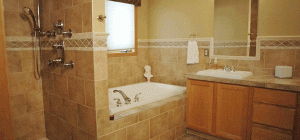 People tend to clean what their eyes see first. And, in general, just a few of us think of the hidden problematic spaces in our homes we should focus on as well. Unfortunately, many times these exact hidden spaces are what can make us even sick and to cause allergies. This came to my mind a few days back and I couldn’t resist the temptation to check what’s inside my pillow. And let me just say-I was disgusted of what I found out was sleeping on for the past 2 years. So, I did my research and I realised how wrong I wad maintaining my home.
People tend to clean what their eyes see first. And, in general, just a few of us think of the hidden problematic spaces in our homes we should focus on as well. Unfortunately, many times these exact hidden spaces are what can make us even sick and to cause allergies. This came to my mind a few days back and I couldn’t resist the temptation to check what’s inside my pillow. And let me just say-I was disgusted of what I found out was sleeping on for the past 2 years. So, I did my research and I realised how wrong I wad maintaining my home.
As you probably suspect, I’m going to talk about mattresses and pillows. I found out they are a real danger we should focus on when taking care of them.
Now you wonder how can your mattress affect your health?
Well, mattresses and pillows are the perfect place for bacteria to live, because most of the times we use them for more than the recommended time. Because of the constant contact to human body, the mattress is inevitably the perfect place for microbes and other unwanted guests to develop inside of it. The bacteria and mould spores may be invisible, but you breathe them while you sleep. The only way you can protect yourself and your family’s health is by replacing your old mattress with a new one every eight years. That’s apparently the magical number when it comes to mattresses. I came across a disturbing research-82% of people had no idea how often they should replace their mattresses. The common believe is that the mattress should be changed when it gets covered in stains and flat as a pancake. That’s obviously far from the truth, but we tend to underestimate the hidden dangers in our properties.
Did you know that the weight of your mattress doubles in ten years due to the dust mites infestation. And the number of the dust mites can vary, depending on the age of your mattress-from one million to TEN million dust mites.
So, how can you recognize if you have a dust mite allergy? Well, scientists say that if you often wake up with a runny nose, watery eyes, congestion, sneezing or itching, then you probably have a dust mite allergy.
Hopefully, there are ways to prevent the disastrous effects of dust mites and other bacteria in your bed. I found them really easy to implement and, although I’m struggling to wash the sheets each week (I’ll admit I used to do it every two or three weeks), I feel relieved now. Here are a few very simple rules to follow when it comes to your mattress and bed hygiene:
1. Encase the pillows and the mattress with special allergy bedding in order to create a barrier between you and the allergens. What you should look for in those special bedding pieces is their pore size. Some of the companies offering such bedding sell items with pores less than 2.8 microns. There are even woven ones, which praise that dust mites aren’t able to penetrate the bedding. That sounds safe!
2. Wash bedding each week. I know it sounds a bit drastic, but I know it’s worth it. Have in mind that water should be really hot (at least 60°C) in order to kill dust mites. Also, dry them in hot temperature as well.
3. Keep the humidity level of your home at the lowest possible level, as dust mites love higher humidity. Invest in a good dehumidifier, because dust mites can’t survive in drier spaces.
4. Dust mites live in carpets too, so (if possible) replace the wall-to-wall carpets with bare floor (tiles, wood, linoleum will do the job).
5. Remove the dust only with damp cloth! Avoid using a dry one, because that way you only stir up the allergens.!
With these precautions you can rest assured your bed is definitely a safer place now. From now on you’ll probably think of dust mites each time you jump into your bed, but don’t be afraid of doing so. With the right treatment it will be perfectly safe for you and your family.







